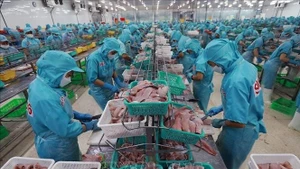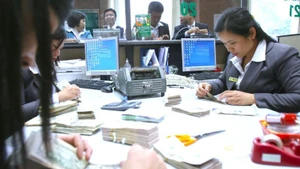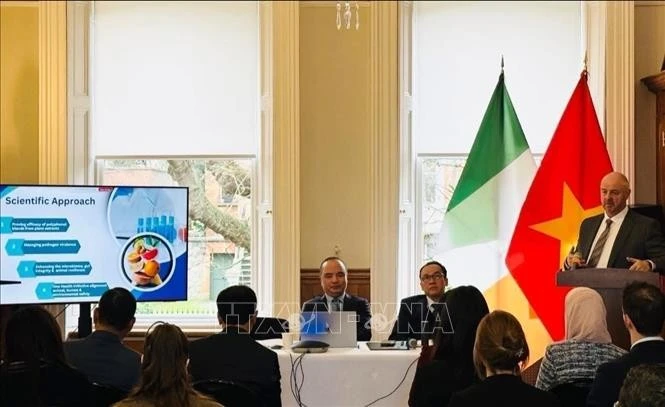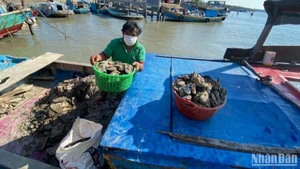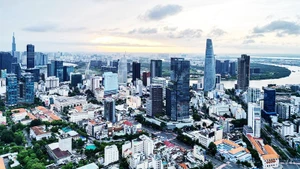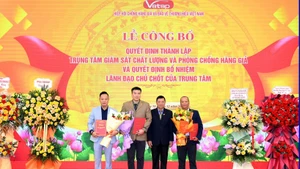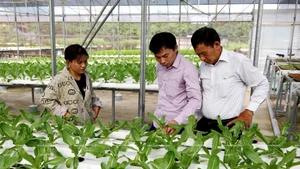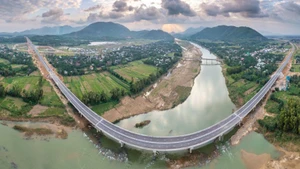It has been scheduled that the 40th and 41st ASEAN Summit and Related Summits held on November 8-13, 2022 in Phnom Penh city of Cambodia will see the Cambodia Chamber of Commerce host the ASEAN Business and Investment Summit 2022, where leaders of the bloc, its partners, and business leaders will discuss and exchange views on opportunities and challenges in the post-COVID-19 period, with a focus laid on economic recovery, and the Regional Comprehensive Economic Partnership (RCEP), among others.
It is also expected that the 40th and 41st ASEAN Summit and Related Summits will also see the debates on the work of the RCEP Joint Committee whose subsidiary bodies were established in September 2022.
The RCEP was inked on November 15, 2020 by the 10 ASEAN member states and the bloc’s five partners including China, Japan, the Republic of Korea, Australia, and New Zealand. The agreement became valid on January 1, 2022.
According to the Vietnamese Ministry of Industry and Trade (MoIT), how to proceed with the operations of the RCEP to benefit member economies and improve business environment in the region will be among the key priorities on the agenda.
In reality, the member states have “reaffirmed the necessity to refrain from taking any measures inconsistent with the obligations under the RCEP agreement”, and are looking forward to the expeditious establishment of the RCEP Secretariat, on terms to be agreed by the parties, to provide secretariat and technical support to the RCEP Joint Committee and its subsidiary bodies.
“The RCEP could contribute to the region’s post-pandemic recovery efforts and to creation of a more resilient supply chain,” said a joint media statement of the inaugural RCEP ministers’ meeting organised in Cambodia on September 18, 2022.
The RCEP’s member economies have also highlighted the need to promote greater utilisation of the RCEP agreement to deepen regional economic integration.
Advancing benefits
It is also expected that at the 40th and 41st ASEAN Summit and Related Summits, the member nations will discuss the full adoption of the RCEP following the deal already ratified by 13 of the total 15 member states.
At present only the Philippines and Myanmar are expected to complete their adoption procedures and then may approve the RCEP the deal at the year’s end or in early next year.
The RCEP covers a market of 2.3 billion people and 26.2 trillion USD in global output, meaning as much as 30% of the population worldwide and over a quarter in world exports.
Thus the RCEP is the world’s largest free trade agreement (FTA) providing simplicity in trade ties with its uniform terms and conditions among the agreement’s member countries.
According to the MoIT, once in full adoption, the RCEP will facilitate the member economies to benefit from tariff reductions in their respective markets.
Under calculations by the Centre for WTO and International Trade under the Vietnam Chamber of Commerce and Industry, the RCEP will provide Vietnam with the most benefits from investment and flows in comparison with about 13 FTAs that the nation has inked and with another two that will inked in the future, both bilaterally and multilaterally.
“In addition to helping Vietnam raise trade ties with the RCEP’s member economies, and unlike almost many other FTAs that have Vietnam as a member, the RCEP will especially enable Vietnam to lure in more foreign direct investment (FDI) from the countries that are its top 10 foreign investors such as the Republic of Korea, Singapore, Japan, China, Thailand, and Malaysia,” said Nguyen Thi Thu Trang, director of the centre.
As of October 20, registered investment capital into Vietnam from the Republic of Korea, Singapore, Japan, China, Thailand, and Malaysia sat at 80.61, 70.39, 68.34, 22.6, 13.1, and 13 billion USD, respectively.
In an example, over the past few weeks, the Republic of Korea’s Samsung is boosting the completion of its $230 research and development centre in Hanoi, which is expected to become officially operational soon.
It is estimated that this group has invested more than 18 billion USD in Vietnam so far and it is now also planning to pour an additional 3.3 billion USD in the nation. Samsung has set a target of earning an export turnover of as much as 69 billion USD in 2022, up from 65.5 billion USD in 2021.
Samsung is estimated to create over 90% of Vietnam’s total export turnover of electronics and mobile phones. In the first 10 months of 2022, the country’s total export of mobile phones and spare parts reached 50.14 billion USD, an on-year climb of 7.6%.
More than a month ago, local media cited Samsung Electronics Group as reporting in its financial statements for Q2 of 2022 that the total revenue of four factories Samsung Thai Nguyen, Samsung Bac Ninh, Samsung Display Vietnam, and Samsung HCMC CE Complex in Q2 of this year stood at 17.9 billion USD, an on-year rise of 30%.
“The Republic of Korea’s enterprises are considering Vietnam as a very attractive investment location, and they are planning to invest more billions of US dollars into Vietnam in the coming time, said Hong Sun, vice chairman of the Korea Chamber of Business in Vietnam.
In another case, Japanese investors are also hunting more investment opportunities in Vietnam. Last year, Japanese investors registered to invest in the O Mon II Thermal Power Project, with total registered capital of US$31 billion and in the Vina Kraft Paper Factory with US$611.4 million. Meanwhile, the Sumitomo Group is working on phase II of Thang Long Industrial Park in the northern province of Hung Yen and the Van Phong 1 BOT thermal power project.
Major brands, namely UNIQLO and MUJI, is now quickening their investment in Vietnam and have confirmed the new investment trend of Japanese investors focused on retail, finance and banking, instead of just industrial production as was the case in the past.
Shuji Oida, general director of Japan’s Justin JSC, said his firm is specialised in producing gaskets for many industries worldwide. Justin is now seeking opportunities to set up a new production plant in the southern province of Dong Nai to supply products to the local market and other regional economies.
Extended bonanzas
Under the RCEP’s commitments, member states committed to remove 87.8 - 98.3% of tariff lines for Vietnam, and ASEAN countries pledged to do that with 85.9 – 100% of tariff lines. The longest roadmap for tariff elimination is 15-20 years as from the RCEP became valid.
According to the World Bank’s recent report on RCEP impacts, Vietnam is set to enjoy the highest trade and income gains among RCEP member nations. In order to estimate the RCEP’s economic and distributional impacts on Vietnam, the World Bank has used a baseline and four alternative scenarios – based on different circumstances.
Concretely, exports and imports will expand for all RCEP member economies under all scenarios. The increase in trade is higher when the full scenario with an assumed rise in productivity. Under this scenario, the nations with a higher climb in exports include Vietnam (11.4%), Japan (8.9%) and Cambodia (6.5%), while imports advance remarkably in Vietnam (9.2%), the Philippines (7.2%), and Japan (6.4%).
“When it comes to total exports, the industries that expand the most for Vietnam include motor vehicles (18.6%), textiles (16.2%), and wearing apparel (14.9%), mainly on the back of reductions of non-tariff measures: motor vehicles reduce by 3.5 percentage points; wearing apparel went down by 3.7 percentage points; and textiles by 1.4 percentage points,” the report said.
In the baseline scenario, from 2020 to 2035, the average trade weighted tariff inflicted by Vietnam drops from 0.8 to 0.2%, while the tariffs faced by Vietnam are decreased from 0.6 to 0.1%.
According to analysis by the US’ Peterson Institute for International Economics, Indonesia, Malaysia, Thailand, and Vietnam will benefit the most from the RCEP, which will add 2-4 billion USD annually to their respective economies by 2030.

